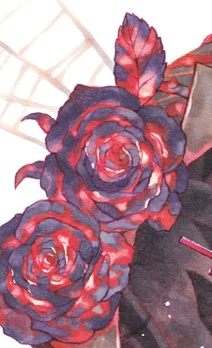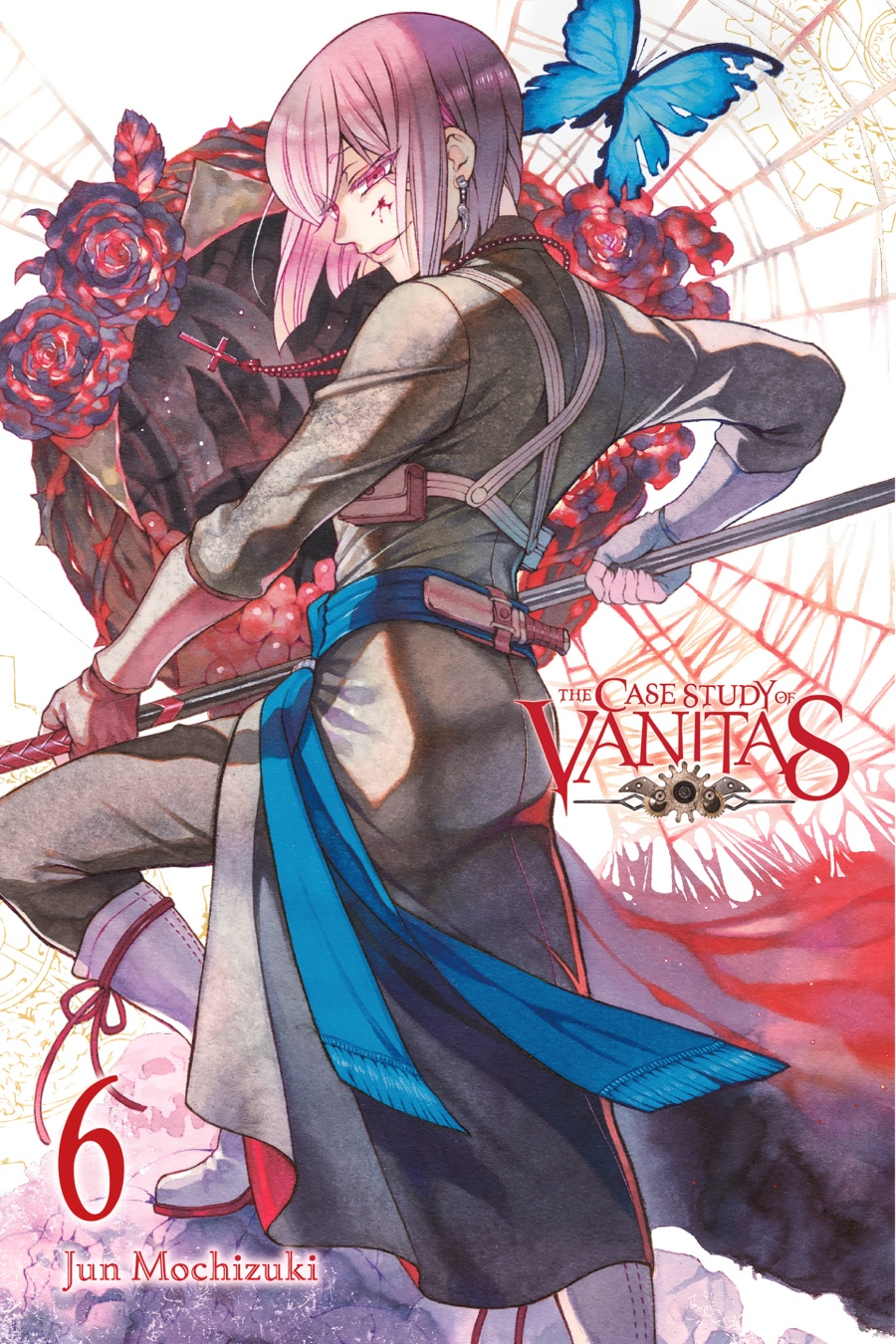Astolfo is brandishing Louisette, with an expression of unhinged tranquility, while standing upon a mound of skulls. Following the departure set by the previous volume, this frame is associated with this arc’s main antagonist. The Chasseurs’ youngest paladin is a bringer of violence and danger judging by the symbols that came with him.

Black roses wrap around Astolfo’s frame. Black is the color of mourning, and these roses are for his dead family, slain at the hands of vampires when he chose to befriend one as a child. Astolfo is still mourning their deaths in the present. The roses are soaked in blood, referencing both their violent deaths and the violence Astolfo inflicts on vampires out of revenge.
The roses are wrapped around an open black pomegranate, the frame for volume 6. The pomegranate is a reference to Astolfo’s family name, Granatum. Within the frame is the d’Apchiers’ world formula alteration device, the reason for Astolfo’s presence in Gévaudan in the first place.
Radiating out from the pomegranate frame (and what appear to be part of his clothes) are spiderwebs. The web has caught a ragged blue butterfly, a symbol typically associated with Vanitas. This image is curious considering how Vanitas toys with Astolfo through the Gévaudan arc. Perhaps it’s just to give the reader a sense that Astolfo is dangerous to our main characters.
Astolfo has blood on his face, a reminder of his constant bloodlust against all vampires (and really anyone who triggers his wrath). He has his foot on a pile of skulls. One could say that this is vanitas symbolism, but given the contents of this arc: where Astolfo goes, death follows.
